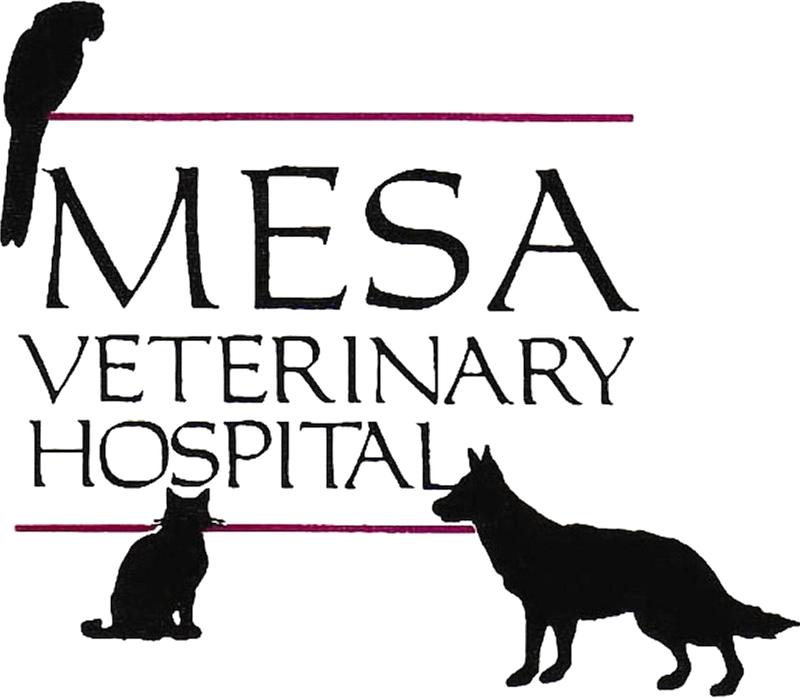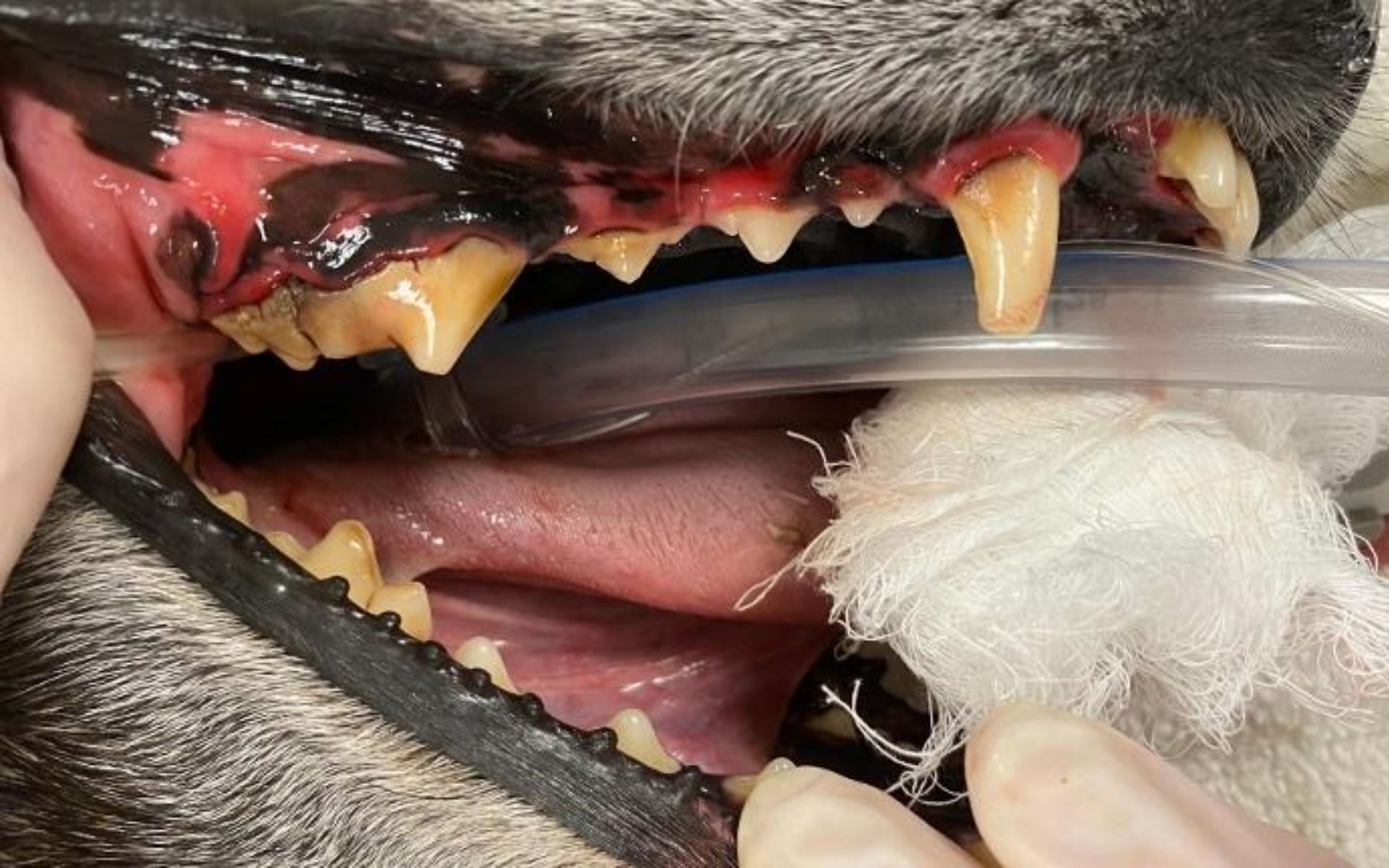No! Foul breath is a sign that disease is lurking around the corner. According to the American Veterinary Dental Society, 80 percent of dogs have oral disease by age three and two-thirds of pet parents do not perform at-home dental care.
If this blog post is your first foray into considering pet dental care – you are not alone. We’re all busy! But if we ignore our pets’ teeth, they can fall out or require extraction after long-term, painful disease.
Why Does This Happen?
The journey to dental disease starts with food. The carbohydrates and sugars that feed our pets also feed the bacteria in their saliva. When saliva mixes with food, plaque forms. This sticky film mineralizes into tartar within 48 hours. As tartar builds up along the gum line, it pushes the gums away from the tooth exposing the root. The root of a tooth is not covered by protective enamel so bacteria quickly start to wreak havoc in the periodontium.
The periodontium includes all the structures that surround and support a tooth root. Bacteria from the tartar eat away at the periodontium leading to periodontal disease: gum inflammation, abscesses, mobile teeth, bone loss, gum recession and chronic pain.
It can feel overwhelming to fight periodontal disease all by yourself – that’s where we come in. Talk to your veterinarian about building a comprehensive dental care plan for your pet! A balance of home care and annual professional cleanings can help ensure a healthy mouth and a longer, happier life for your pet.
How to Fight Dental Disease
1. Brush your pet’s teeth daily. They eat daily, so plaque forms daily!
-
- Use a pet-safe enzymatic toothpaste and make sure they like the flavor!
- Find a gentle brush, finger brush or piece of gauze. If your pet is nervous, start by simply rubbing the brush against their muzzle as though grooming or petting. Then, lift their lip and using gentle circular motions, start brushing. Pay special attention to the big molars in the back – those love tartar.
Make sure your pet gets spoiled after brushing so they’ll come back and let you do it again tomorrow.
We know this can be difficult, but if you are able to brush 3-5 times a week, you’re doing a great job! Remember, it takes 48 hours for plaque to mineralize into tartar so brushing every other day is a good start.
2. Give dental treats or chews on days when you can’t brush.
-
- Avoid bones or toys that are too hard to compress with your fingernail. These can break teeth and can cause additional problems!
- Visit Veterinary Oral Health Council for a list of accepted products for dogs and cats.
- Watch out for products with savvy marketing that may not be helping your pet. For example, if you have a product that says “tartar dissolver” or “tartar remover,” be skeptical. Remember tartar is mineral so if a product claims to dissolve it – you should be worried about it touching your bare hand, not to mention your pet’s mouth!
- If your pet is trying to lose weight, pay attention to the calories these treats add.
3. Avoid “anesthesia-free dental cleanings.” I know they’re tempting, but…
-
- These procedures simply scale plaque and tartar from the tooth crown, which is the part of the tooth you can see.
- Remember, periodontal disease is in the tooth root and this cannot be evaluated without radiographs (x-rays).
- Ultrasonic scalers are ideal tools and these cannot be used with an awake dog due to discomfort, noise, and risk of aspiration.
- Hand scalers have a sharp edge that leaves grooves in the teeth. Without additional polishing, these grooves simply invite more bacteria.
- If you have concerns about anesthesia for your pet, please talk to your veterinarian to make a personalized plan.
4. Treat your pet to an ANNUAL comprehensive anesthetized oral health assessment and treatment.
-
- Some pets may need these professional dental cleanings more or less frequently.
- These procedures involve oral radiographs, scaling, polishing, and treatments for diseased teeth such as extractions or root canals.
- All of these steps work together for the best oral health. Prevention can keep your pet’s mouth infection and pain-free!
Each species, breed, and pet is different. Always consult your veterinarian prior to starting a dental care plan. Any time you notice signs of oral disease such as brown tartar at the gum line, bright red gums, increased sensitivity, excessive drooling, bleeding, or bad breath, consult your veterinarian as soon as possible.

